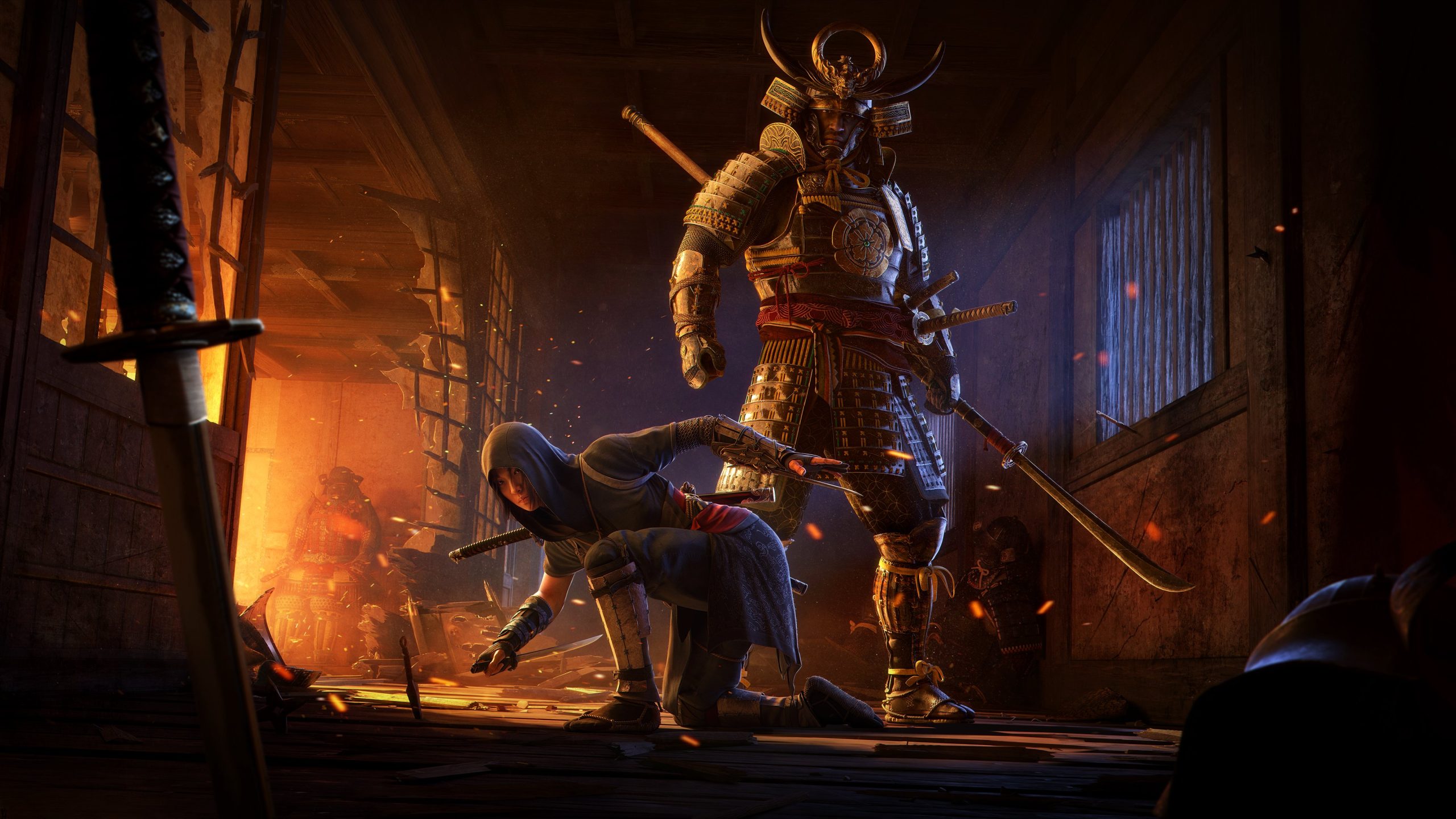If you have to blame anything for this comparison, blame Ghost of Tsushima. Ghost of Yōtei is the sequel, so understandable, have a nice day. Where Winds Meet has cited Tsushima as one of the inspirations for its world design. And with Assassin’s Creed Shadows, let’s be honest – this wouldn’t have happened if Tsushima didn’t perform so well.
But while Jin Sakai’s quest is the common thread, each of these open-world titles offers something unique, whether it’s in their settings, protagonists or overall direction. Which emerges as the clear favorite? Let’s delve into every single aspect, starting with…
World Design
One of the bigger criticisms surrounding Ghost of Tsushima is how repetitive its world could be – something Ghost of Yōtei addresses immediately. The relative freedom to find your own path is great, but so is the overall layout of the world, as you seamlessly transition from discovering onsens and fighting off wolf poachers to dismantling enemy camps or challenging a disciple of Takezo. The fact that each activity, even within the same category, feels unique and memorable is also a major plus.
Assassin’s Creed Shadows is in second place. Even if it features many of the same tenets of the publisher’s open-world formula, the sheer variety in locales, right down to individual castles, is pretty nice, as is the fact that there’s a proper open-world alarm system. But Where Winds Meet is no slouch. Locations like Kaifeng City are packed with things to do, but even if you’re exploring the massive Jianzhu, there’s no shortage of quirky NPCs, interesting side quests and killer geese.
Systemic/Emergent Gameplay
To that end, it feels like there’s always something unique, be it impressive or downright bizarre, to discover in Where Winds Meet. The fact that you can go around stealing from other people, then end up in prison, is only one of several possibilities. Yōtei doesn’t offer as many – Atsu’s only real failure state is death – but the way it handles random encounters, whether it’s bounty hunters, lone assassins or passersby, is well done. It even leverages those to aid in your quest to learn more about the Yōtei Six.
Shadows leans into observing and gathering clues from NPCs to learn more about potential targets. It also has random encounters like helping out someone who’s being attacked or solving a riddle. A decent effort overall, even if it’s slightly behind Yōtei.
Combat
By itself, Yōtei should easily win. It’s an excellent expansion on Tsushima’s fundamentals – just with new weapons (kusarigama, my beloved), abilities, and tactics, which are further expanded on thanks to the new Charms. The overall visceral nature of combat – the precision required for parries and disarms – also keeps it near the top of melee combat titles. That being said, Where Winds Meet, despite how different it is, excels in its own ways, presenting cool over-the-top abilities, fun weapons (like the rope dart), and just overall excellent responsiveness. In that sense, both titles are about on par.
Shadows falls behind, sadly. Its combo system is more robust than previous entries, but the overall feel isn’t anywhere near as smooth as Yōtei or Where Winds Meet. Even its weapons just aren’t as exciting. On the bright side, it does excel in…
Enemy AI
Compared to Yōtei and Where Winds Meet, Shadows’ AI can be pretty deadly, especially if you crank the difficulty settings up. Guards are more sensitive to noises and will investigate more thoroughly, which allows for its main appeal – the stealth – to really shine. Enemies in combat aren’t too shabby either, presenting a decent challenge, especially if you’re surrounded.
It shouldn’t be a surprise that Yōtei’s combatants are deadly, perhaps even more so than Tsushima. The toughest duels, especially on Lethal difficulty, could easily rank among some of 2025’s more challenging bosses. However, much like its predecessor, a full assortment of tools, weapons, and techniques makes it easy to sneak about and dispatch large groups.
The enemies in Where Winds Meet aren’t overly bright, but they’re not pushovers either. You’ll still need to think carefully before engaging with tougher threats, especially if your gear isn’t up to snuff. But overall, it’s an easier game to delve into as a whole.
Story
Atsu’s personal quest for vengeance and eventually redemption wins out here, of course. Even if some may bemoan the use of revenge in a major PlayStation title once again, it’s taken in a surprisingly interesting direction with some excellent cinematic panache. The characterization as a whole is also very well done, whether it’s Atsu growing more as a person after years of emotional suffering or Saito’s somewhat sympathetic, but manipulative, thought process.
The main story in Where Winds Meet is, surprisingly, pretty robust. It channels the Wuxia genre with its reliance on the epic tales of heroes during the Five Dynasties and Ten Kingdoms period, while keeping you emotionally invested throughout (especially when it comes to characters like Ruby and Killer Blade). And it’s only up to Chapter 2.
Assassin’s Creed Shadows starts strong enough, but sadly can’t keep the momentum going, dragging in places before suddenly concluding (with Claws of Awaji answering the more pressing questions). The lackluster English voice acting and cutscene direction also don’t help. Naoe and Yasuke are still interesting characters, though.
Quest Quality
Fancy engaging in a tragic ghost hunt for a mystic set of armor? How about taking on bounties and ending up in dangerous hideouts used to train assassins? Ghost of Yōtei has all this and much more. Outside of its open-world activities, the quests are simply immaculate, whether you’re infiltrating a fortress or attending a performance as the, let’s say, lead dancer.
Where Winds Meet may not have that same level of polish and structure, but it makes up for it with some excellent variety. You’ll observe different animals to learn their techniques, embark on Forged Tales, engage in Rhetoric Duels, delve into dungeons, the list goes on. It’s all pretty fun without bogging down the pacing.
Assassin’s Creed Shadows, despite throwing too much at you too quickly, has some fun quests. Infiltrating castles is cool, especially given the different approaches of Naoe and Yasuke, as is having separate quests for them. Spreading objectives across multiple regions, especially when some remain locked, is annoying, but the companion quests, assassination board missions and kuji-kiri quests are pretty good.
Visuals
Once again, Ghost of Yōtei is the winner, though both Assassin’s Creed Shadows and Where Winds Meet put up strong fights. Everything about Yōtei, from the implementation of ray tracing to the extensive draw distance, particle effects, and performance, is top-tier. Very rare frame drops can occur, but on an aesthetic level, it’s simply superb.
Assassin’s Creed Shadows follows it, and say what you will about everything else, its depiction of the late Sengoku-era Kansai is excellent. Atmos provides some stunningly realistic weather effects, further enhancing the environments, and cities feel alive with detailed NPCs. Where Winds Meet is in third but only by a bit – its fidelity doesn’t surpass its competitors, but it’s still shockingly close, especially for a free-to-play game.
Conclusion
To no one’s surprise, Ghost of Yōtei wins out in several categories, from the presentation and story to the world design (and rightfully so). However, Where Winds Meet puts up a great fight, excelling in its own combat fundamentals while presenting a fun world to explore with numerous surprises and an endearing plot. Assassin’s Creed Shadows does excel in stealth, and while the world design, systemic gameplay, and quests can be good (while combat is okay), it falters heavily with its story.
While this proves that Sucker Punch was right on the money when it came to designing Yōtei, it also highlights just how good Where Winds Meet can be, even if you’re looking for a single-player title. The price of entry is pretty much non-existent. Shadows isn’t the worst option by any means, but you should prioritize the others first, depending on the kind of epic journey you desire.
Note: The views expressed in this article are those of the author and do not necessarily represent the views of, and should not be attributed to, GamingBolt as an organization.





